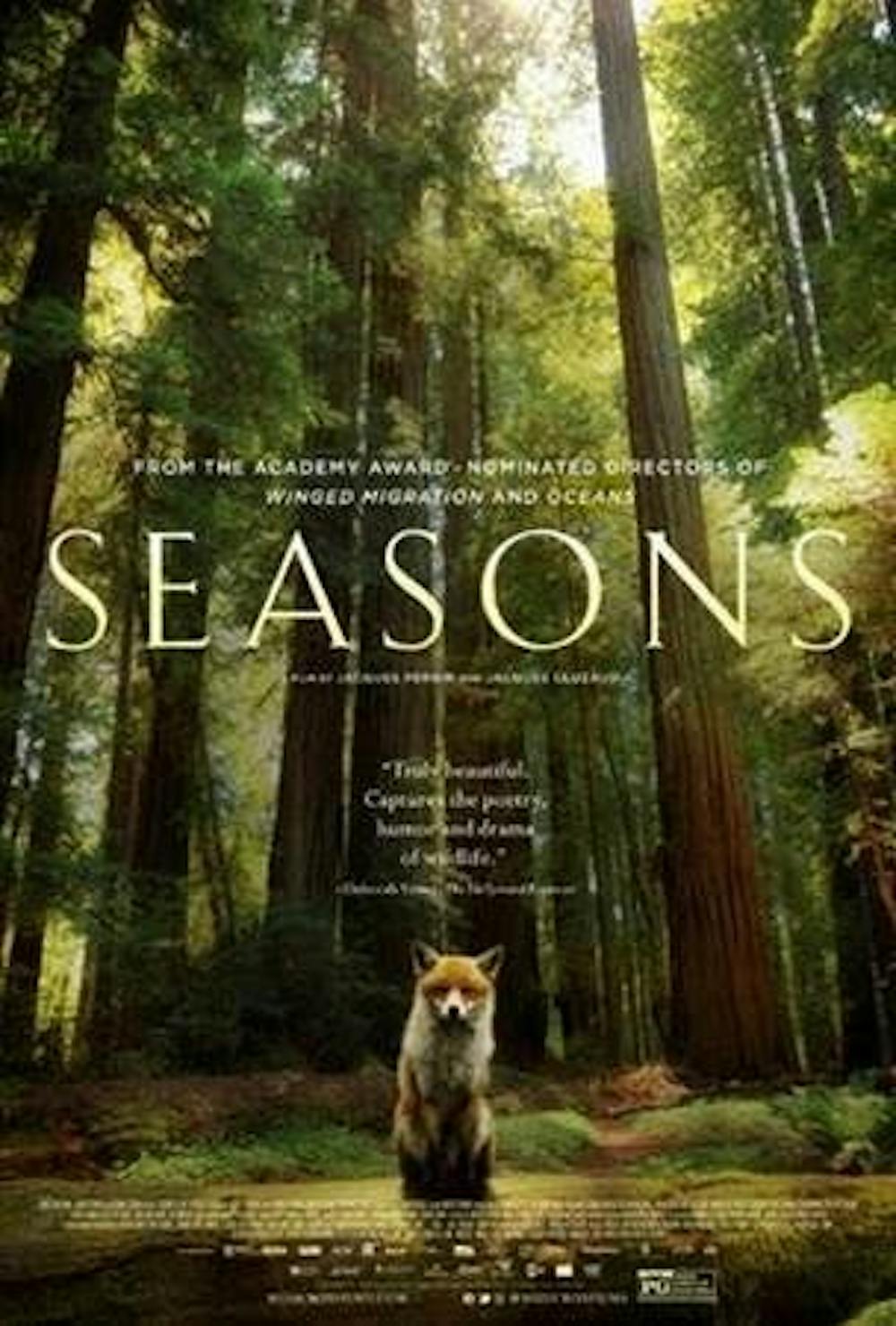From: Silver Screen
Review: "Seasons"

Jacques Perrin and Jacques Cluzaud's new film Seasons opened on November 25, the perfect time to be thankful for what we love and the beauty in our own lives. Though it takes a while to get there, Seasons is a call to action for viewers to protect the wilderness from decreasing any further. Humans have developed and powerfully pushed against the wilderness. This film asks us to question why we cannot allow nature to rebuild and reclaim places that were cultivated and developed by humans. Seasons is filmed very differently than many other documentaries. There is minimal direction from the narrator (Jacques Perrin) as to what the viewer is looking at. This allows the wilderness, as the subject of the film, to speak for itself in the quiet, yet powerful way it does.
The most fantastic aspects of this film are the shots of wildlife. Small wolf cubs play with each other and hide from a predator. Colorful birds dance in the sky, drink from springs or peer out from holes in trees at the woods around them. A deer births a calf and many chicks are fed by their parent. The shots are clear, intimate and stunning. The viewer is pulled into this natural world and quickly falls in love with all of the interesting creatures that live there. This film does this effectively by allowing the animals to interact with one another, without any interaction from the camera or a narrator.
For the first half of the film, the Earth develops and the flora and fauna of the Earth develop. Animals roam, play, and hunt each other. There are many shots of different animals feeding on and escaping from each other. Cycles of life and death intertwine with each other almost monotonously, except that the footage is so beautiful that it stays interesting throughout. This documentary includes brief scenes of early humans living within and among nature, but except for a few instances where a child peers out from behind a bush to look at the nature around them, humans are not a major part of this film. In fact, in some of the scenes where there are humans as hunters or early settlers, their heads are above the shot, to depersonalize these people.
A little over halfway through the film, things change quickly. The animals and wilderness still live their lives and hunt each other, but now an arrow may shoot through the tree and kill one of them as well. A road is built through the forest and hedgehogs must avoid being trampled by a horse and carriage. Pathways in the forest show how humans are taming and destroying the wild beauty of the wilderness. Because the viewer has been interacting with these animals for so long in the movie, it is saddening to watch them struggle to adapt to their quickly changing environment.
Though little commentary is provided throughout the film, the ending message is spoken clearly and directly to the viewer. The wilderness has had to adapt to humans taking over and destroying the world. The wilderness continues to adapt, but it cannot do so forever if humans continue to make no change. If the wilderness is destroyed by human development, society will lose the wild beauty of nature. This films shows viewers a new way to think about saving the environment, from the viewpoint of the environment itself. Seasons is a work of art, and Perrin and Cluzaud have successfully completed their third documentary about the natural world.
Grade: A




